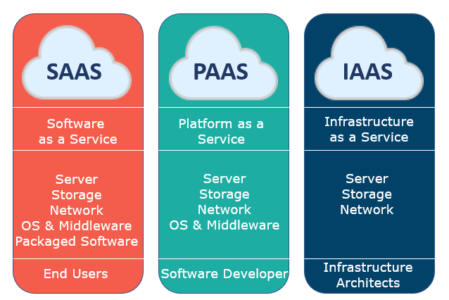LinkDaddy Cloud Services: Cutting-Edge Solutions for Your Organization Requirements
Wiki Article
Achieve Seamless Scalability With Cloud Provider
In the ever-evolving landscape of cloud solutions, attaining smooth scalability stands as a foundation for contemporary organizations looking for to stay versatile and competitive. The capacity to effortlessly expand or acquire resources in action to changing demands is an essential advantage in today's hectic electronic environment. By grasping the art of scalable cloud solutions, companies can not just maximize performance and enhance operations however also lead the means for future growth and innovation. The mission for smooth scalability with cloud services introduces a world of possibilities for those going to welcome the transformative power of dynamic source monitoring.Advantages of Cloud Scalability
Cloud scalability supplies companies the adaptability to dynamically readjust resources based on need, making certain optimal efficiency and price efficiency. In addition, cloud scalability promotes technology and trial and error by enabling services to easily check new ideas and range them as required. Eventually, the benefits of cloud scalability expand beyond price savings to encompass enhanced performance, agility, and advancement.Key Attributes for Scaling
Efficient scaling in cloud solutions depends on crucial attributes that allow organizations to readjust resources dynamically based on demand. One important function for scaling is flexibility, allowing sources to scale up or down in response to varying workloads. This makes sure that companies can satisfy efficiency demands without over-provisioning sources. An additional key feature is scalability, allowing systems to take care of enhanced work by adding resources effortlessly. This function is vital for fitting development without compromising performance. Additionally, automation plays a crucial function in scaling by automating the provisioning and de-provisioning of resources based upon predefined policies. Automation decreases human intervention, improves effectiveness, and makes sure quick response to altering needs. Surveillance and analytics devices are also necessary for scaling, offering insights into resource application, efficiency metrics, and potential bottlenecks. These tools enable companies to make enlightened decisions and maximize source appropriation for effective scaling. On the whole, these crucial functions collectively empower companies to accomplish smooth scalability in cloud services.Implementing Auto-Scaling Techniques
To successfully enhance resource allocation and adjust to differing work, organizations must strategically apply auto-scaling approaches in their cloud solutions infrastructure. Auto-scaling permits systems to automatically adjust the number of compute resources based upon real-time demand. There are various auto-scaling approaches that companies can utilize, such as anticipating scaling, which utilizes historical information to anticipate future resource requirements, and responsive scaling, which reacts to existing workload adjustments.
Finest Practices for Scalability
For organizations aiming to enhance their scalability in cloud services, applying ideal methods is vital for optimum efficiency and source administration. One key ideal method is creating applications with a microservices architecture. This approach breaks down applications right into smaller sized, independent services that can be deployed, updated, and scaled separately, enabling higher flexibility and scalability.Another essential practice is using containerization innovation, such as Docker or Kubernetes. Containers allow the packaging of applications and their reliances into isolated units, making it less complicated to scale elements independently and release them regularly across various settings.
Furthermore, implementing automated deployment and facilities as code (IaC) can streamline scalability efforts (linkdaddy cloud services). Automation tools like Terraform or Ansible assistance in provisioning and handling resources successfully, minimizing hand-operated errors and allowing rapid scalability
In addition, checking performance metrics, establishing up notifies, and performing regular capability preparation are necessary practices to make sure positive scalability management. By adhering to these finest practices, organizations can accomplish smooth scalability in their cloud solutions while enhancing performance and source application.
Monitoring Efficiency Metrics
When analyzing the performance of cloud services scalability, carefully monitoring efficiency metrics is essential for guaranteeing ideal performance and resource allotment. By constantly tracking essential efficiency signs (KPIs) such as action times, throughput, source, and latency use, organizations can get valuable insights into the health and effectiveness of their cloud infrastructure. Monitoring efficiency metrics enables for the early discovery of possible bottlenecks or issues that can impact scalability, allowing positive steps to be required to address them prior to they intensify.

Final Thought
Finally, accomplishing smooth scalability with cloud services is important for companies to optimize performance, boost development, and preserve high performance levels throughout peak times. By leveraging the benefits of cloud scalability, implementing auto-scaling approaches, utilizing crucial attributes such as elasticity and automation, and complying with best techniques like application design and performance surveillance, organizations can effectively scale their systems while making best use of resource application and performance.The quest for smooth scalability with cloud services unveils a world of possibilities for those eager to accept the transformative power of vibrant resource monitoring.
Cloud scalability uses organizations the versatility to dynamically change resources based on linkdaddy cloud services need, ensuring optimum performance and expense efficiency. An additional vital feature is scalability, making it possible for systems to deal with increased work by including resources effortlessly.For organizations aiming to improve their scalability in cloud solutions, executing ideal practices is essential for optimum performance and source administration.When examining the performance of cloud solutions scalability, carefully keeping track of performance metrics is crucial for making certain ideal capability and resource allotment.
Report this wiki page